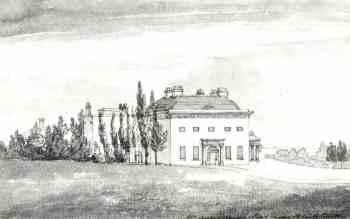Contents
Blackheath: A middle class estate of the 18th and early 19th centuries
by Neil Rhind
The Myth of the Black Death
Blackheath as recognised today was split between the parishes of Greenwich, Lewisham, Lee, Charlton, Kidbrooke and Westcombe. There was neither manor house, nor parish church dedicated to Blackheath until 1857 (All Saints’, on the Heath). Even so, by the 12th century the records make clear that there were people who regarded themselves as Blackheath residents.
It is likely that the population was bigger in 1340 than it was to be for many years subsequently because at least a half of all local souls perished in the pestilence of 1348 - 1349 which has became known, in popular mythology, as the Black Death. The pestilence had nothing to do with Blackheath’s name, of course, as dating alone will confirm. Nor were the victims buried upon it.
The decline of Royal influence at the beginning of the 17th century, culminating in the period of the Civil War (1642 - 1650) may have had a depressive effect on local population and activity. But, whatever, the first hints of Greenwich and Blackheath enjoying a suburban quality can be seen in the development of what would now be called middle class housing on Crooms Hill, on the west side of Greenwich Park.
During a bout of plague (1665) Parliamentary administration was conducted from Greenwich in order to escape the effects of disease in central London. Unfortunately, the plague also spread to Greenwich as the Diaries of Samuel Pepys confirm. Nevertheless, the expansion of London in the mid 17th century and the return of the monarchy (Charles II) in 1660 with an interest in the Royal buildings in Greenwich were encouraging.
